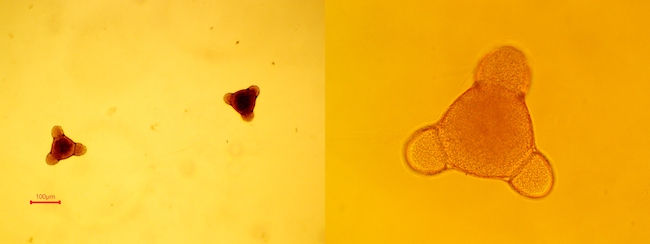pollen
Typically less than 200 μm in size (or your smallest honey filter).
Shape and structure vary by plant species.
Varies in protein content, thus nutritive value.
A tough outer wall (exine) protects the genetic material from heat, UV, and other environmental factors.
Principal source of protein, fat, and minerals for the colony.
Pollen is required for rearing brood of all castes, drone, worker and queen.
Required for development of the hypopharyngeal (nurse bees) and sting (guard bees) glands.
Essential for growth, development, and repair.

